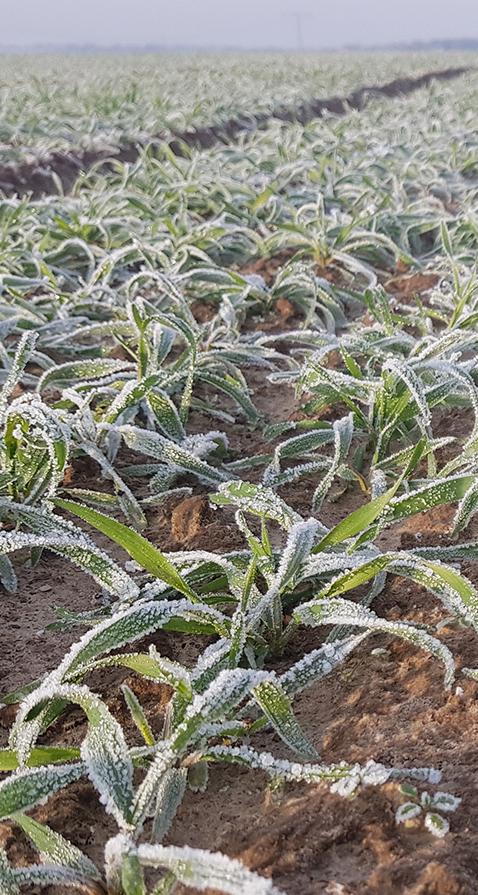Winter hardiness gains increasing importance for establishing highly productive rye varieties in marginal high latitude production regions of Europe and Canada, where continental climates and severe winters require high levels of frost tolerance. Desired and indispensable alleles for winter hardiness may be lacking in elite germplasm or exist only at low frequency, therefore genome-wide approaches such as genomic selection may not be effective for improving a trait like winter hardiness. Tagging of specific genes or defined genomic regions with gene-specific markers enables an efficient introgression of favorable alleles from donor populations in elite material by efficient marker-assisted introgression programs. Frost tolerance (FT) contributes to winter hardiness and is a complex biological process involving at least two main pathways and many additional processes encompassing a large number of genes. In barley and wheat, two major FT loci, frost resistance 1 (Fr1) and frost resistance 2 (Fr2), were identified on the long arm of the homeologous group 5 chromosomes. The Fr-R2 locus on chromosome 5R is well known to improve the recovery of rye plants after winter. Interestingly, none of the analyzed genes residing at the Fr-R2 locus affected the survival after winter. This result indicates, that factors beyond the Fr-R2 locus might control the outstanding winter hardiness of rye.
The recently released rye reference genome sequence facilitates novel downstream applications at the single-gene level with unprecedented precision. In RYE-SUS an in-depth characterization of candidate genes beyond the CBF regulatory hub residing at the Fr-R2 locus will be conducted to get further insights into the genetic architecture of winter hardiness in rye.

